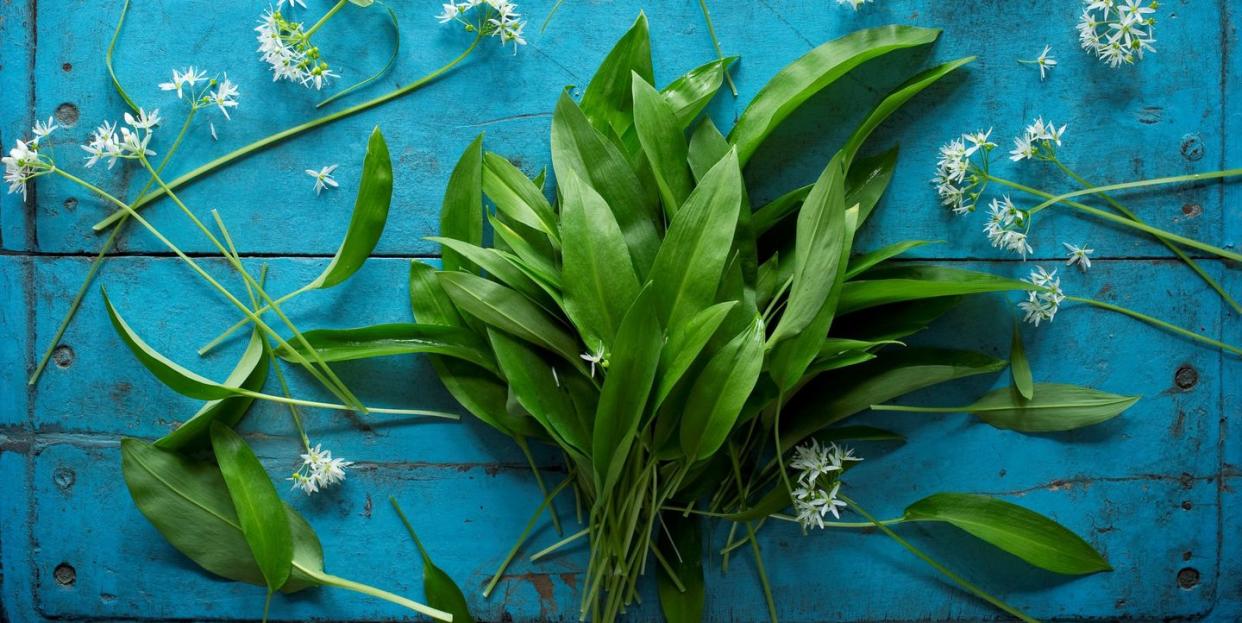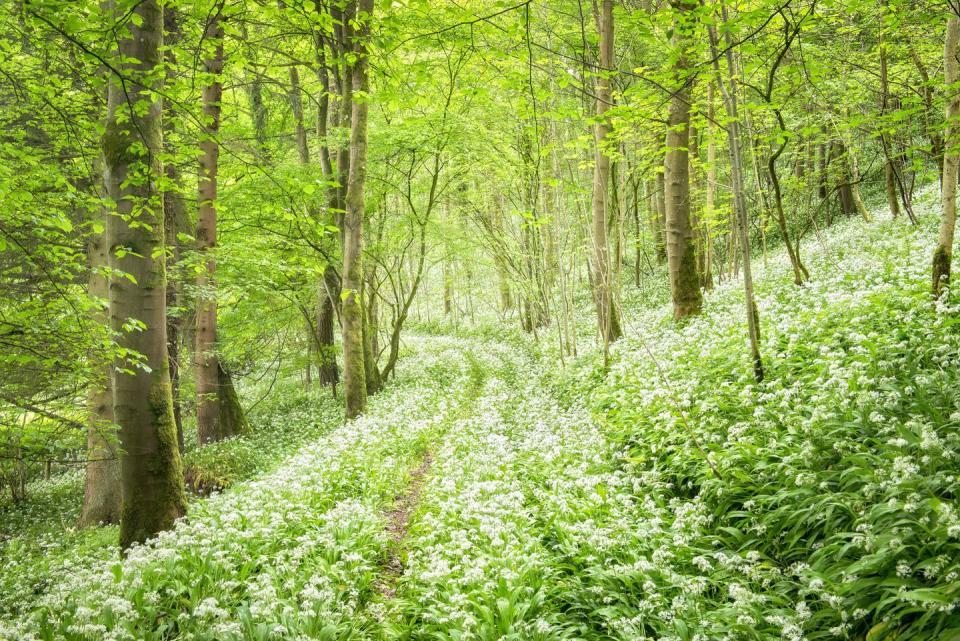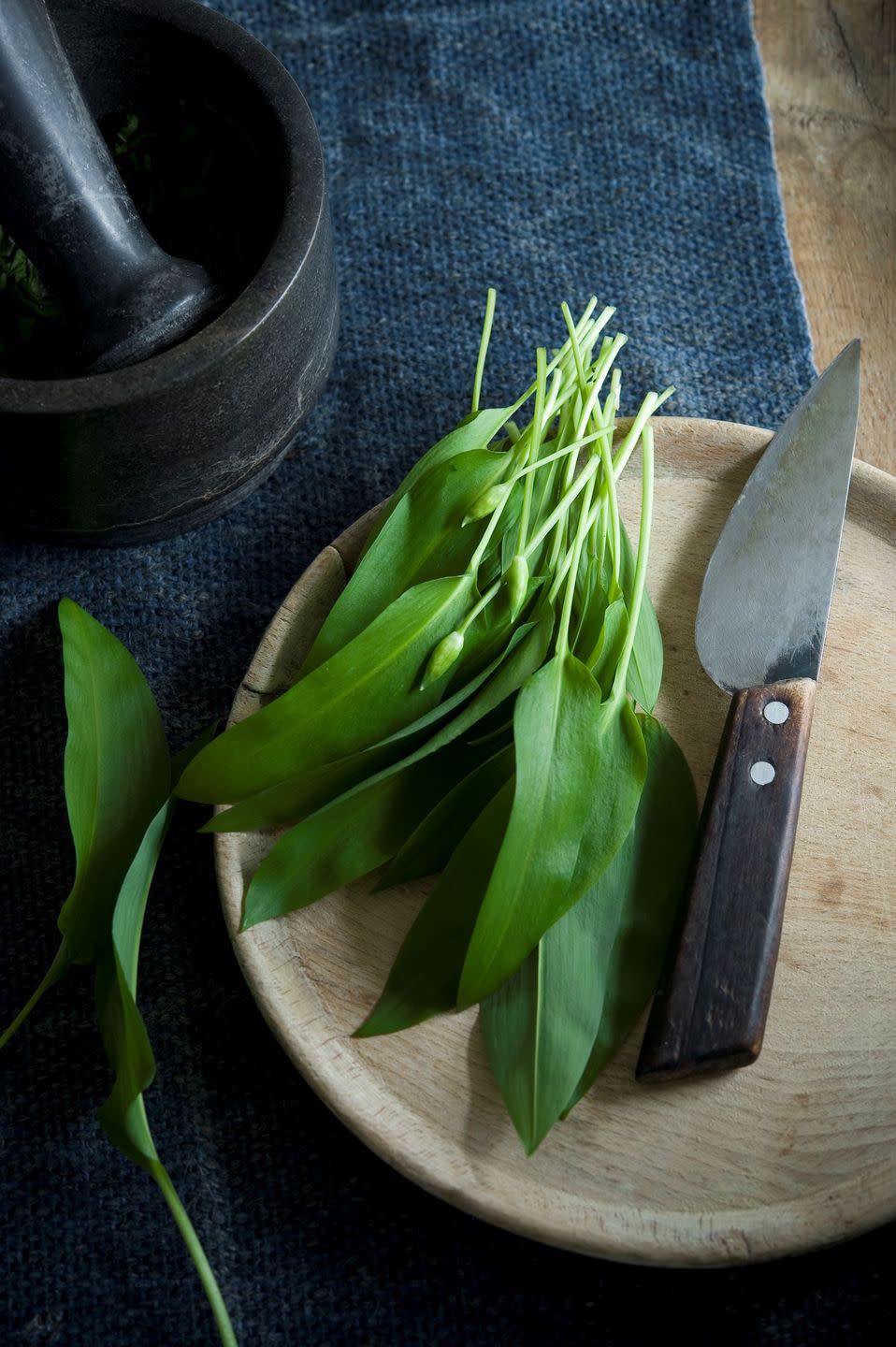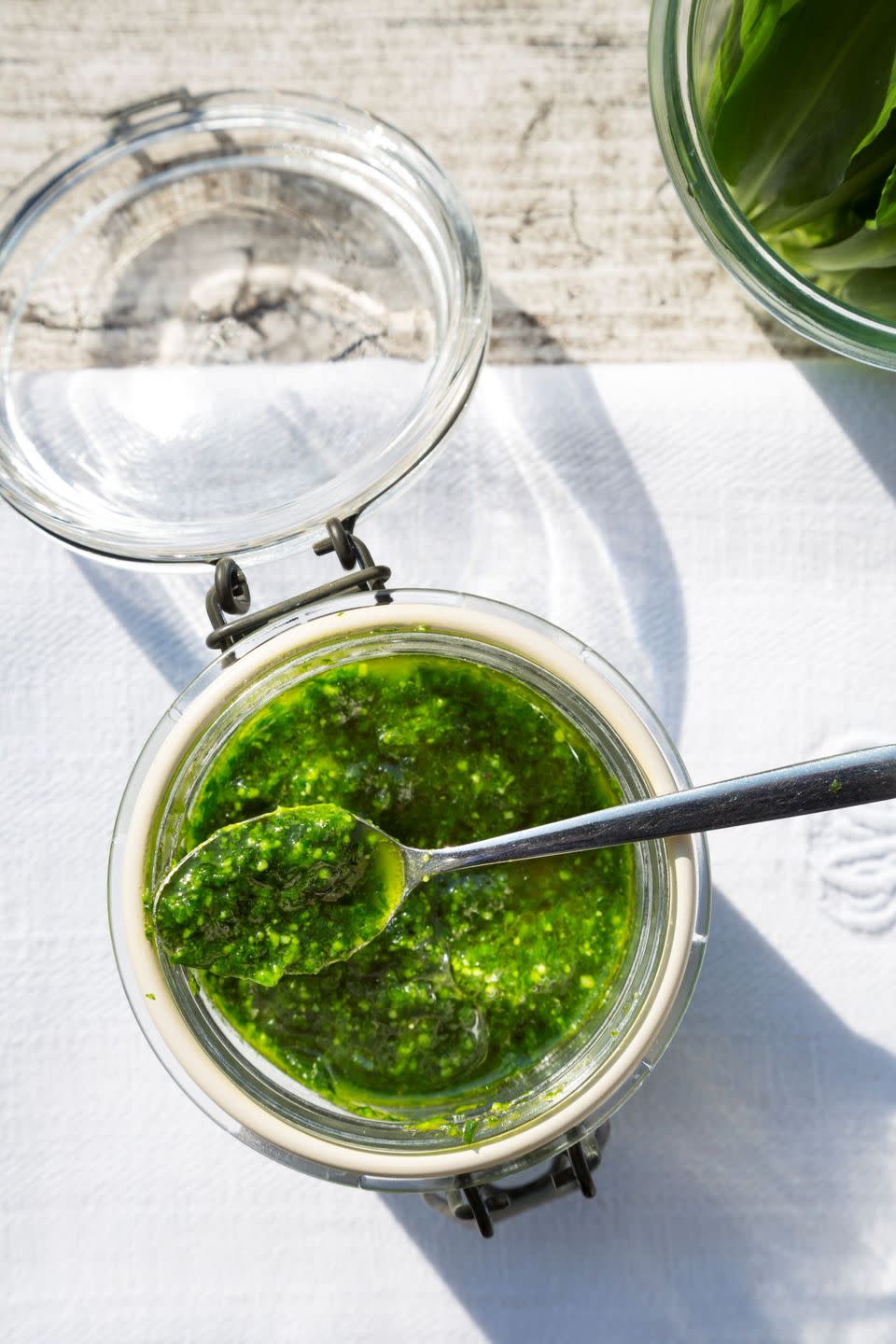How to forage and cook with wild garlic this spring

For the past few weeks each time I have been out in the woods walking the dogs, my eyes have been glued to the woodland floor. While I usually stroll and look at the birds and the trees, or perhaps note how strongly the stream is flowing or what toadstools have sprung up on the fallen logs, throughout February and early March I have had a one-track mind: wild garlic. Where is it? But also how could it possibly be about to emerge from this bare, dead earth, I think, the earth that has looked the same since October?
And yet emerge it suddenly has, unfurling from underground bulbs, pushing up through that still-cold earth, and finally carpeting the woodland floor in lush green leaves. It is time to get out there and get gathering.

I think of wild garlic as one of the gateways to foraging, along perhaps with elderflowers and brambles. All are easy to find, easy to turn into something delicious, and are produced in great abundance.
They are also all touchstones to key moments in the year: the wild garlic marking a switch from winter to spring, shoots pushing up from the chilly earth; the elderflowers from spring to summer, a part of the early-summer festival of frothy blossom in the hedgerows and gardens; and the brambles of summer into autumn, of the switch from growth to ripening, the first berries, and the first harvests.
Going out searching for them puts you into that seasonal, ever-changing landscape, and bringing them home and cooking with them is a really simple (and delicious) way of appreciating what is special about each of these moments in the year.
Where to find wild garlic
To find your wild garlic you will need first to visit a woodland. Not all of them contain it, but generally the older and more established the woodland, the more likely it is to be there - wild garlic is an ‘indicator species’ for ancient woodlands, just as bluebells are, and they are often found together.
I shouldn’t have bothered with scouring the earth for my wild garlic really, because once it is up, it will always make its presence known. If it’s in the area then even the most inexperienced of foragers will find it…by nose. The scent is just like garlic, but a greener, fresher and softer version, that fills the early spring woodland air.
How to identify wild garlic
What you are looking for early in the season is bright green fat, long, pointed leaves.
There are a number of other plants that you could mistake for it, but luckily there is a very simple test: pick a little, bring it to your nose and sniff. Garlic? You’ve found it. And once you’ve found one plant, you’ve found a hundred.
How to pick wild garlic
Gather the leaves by picking rather than pulling. If you pull, you will take up the whole plant, while cutting allows it to sprout again. Gather it by the bagful: you will find so many uses for it. The first stop once back in the kitchen has to be a pesto.

Wild Garlic Pesto Recipe
Wash the leaves thoroughly, and then combine a large handful in the food processor with:
Ingredients
50g of toasted hazelnuts or pine nuts
50g of grated hard pecorino cheese
150ml extra virgin olive oil
juice of half a lemon
salt to taste
How to use wild garlic
Whizz it up and store it in a jar in the fridge for use on pasta or risotto. You can also chop it and cook it in omelettes, add it to stews last minute, stir it into a butter for making wild garlic bread, and add it into cheese scone mix. It adds a delicious light, fresh, garlicy flavour to everything it touches.

How long is wild garlic in season
The season is pretty brief, beginning in late February in the far southwest of the country, and running through to around April time, with the whole season shifting a little later as you move further north and east. So you need to be pretty quick off the mark if you want to harvest some, particularly as it is really at its best when it is new and young and the leaves are still fresh and soft.
A flowering carpet of wild garlic is very pretty indeed – heads of the flowers are white and star shaped and look like little exploding fireworks across the green woodland floor – but by the time they appear, the leaves are past their best.
They get slightly tougher, and slightly more papery the longer they are above the ground, and correspondingly less lovely to eat. The flowers bursting into bloom indicate the end of the season for eating the leaves, but the flowers themselves can then be eaten.
Cut them when in bud and eat them like asparagus tips, or dip them in tempura batter and deep fry.
Get out into the woods now and follow your nose to experience this special moment in the year, this most abundant of wild harvests, and a delicious seasonal treat.
Lia Leendertz is the author of The Almanac, a Seasonal Guide to 2023, Gaia, £12.99 BUY NOW
You Might Also Like


